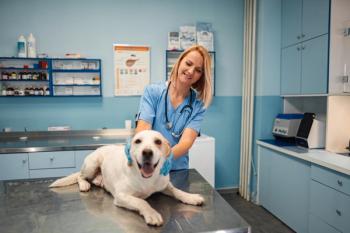
Journal Scan: Dont gag me with germs!
That ET tube is going down the patients hatch, so disinfect it like crazy. Here are five cleaning methods going head-to-head in fighting strep and Bordetella in a new study.
(Photo Getty Images)Why they did it
There are no published standardized protocols for cleaning endotracheal (ET) tubes or data regarding the efficacy of various disinfection approaches. This study's authors evaluated the efficacy of a variety of ET tube disinfection strategies for eliminating two common respiratory pathogens-Streptococcus zooepidemicus and Bordetella bronchiseptica.
What they did
The study authors inoculated the external and reachable internal surfaces of 12 sterilized ET tubes with bacterial suspensions containing S. zooepidemicus and B. bronchiseptica isolates. After the tubes were dried for 30 minutes, two were left untreated to serve as controls and the others were randomly assigned to one of the following five groups:
1. Sprayed inside and outside with accelerated hydrogen peroxide (AHP) solution and left standing for five minutes
2. Soaked in AHP solution for five minutes
3. Soaked in 0.5% chlorhexidine gluconate solution for five minutes
4. Soaked in a solution of 0.3% triclosan soap in tap water for five minutes
5. Soaked in cold tap water for five minutes.
All tubes were then rinsed with cold tap water, and culture samples were taken from the outer and reachable inner surfaces. Samples were “inoculated onto a Columbia blood agar plate for direct culture, then into 2 ml of tryptone soya broth with polysorbate 80 (3% wt:vol) for enriched culture” and read after 24 hours of incubation. Samples of the enrichment broth were also plated and read after 24 hours of incubation. This process was completed 10 times for each group, and the tubes were washed and autoclaved after each repetition. Samples were interpreted as “growth or no growth and scored semi-quantitatively (negative, +, ++, +++, or ++++) on the basis of the number of plate quadrants on which growth was present.”
What they found
The researchers found that in the direct culture samples, only tubes cleaned with chlorhexidine gluconate solution had no growth of S. zooepidemicus in any sample, whereas all tubes treated with triclosan or tap water alone had positive culture results. One of 10 tubes in the AHP spray treatment group and one of 10 tubes in the AHP soaking treatment group had positive growth as well. Median growth scores were significantly lower (P < 0.025 for all comparisons) for chlorhexidine gluconate, AHP spray and AHP soaking treatment when compared with triclosan or no treatment. Compared with soaking with tap water or no treatment, triclosan resulted in a lower median growth score (P < 0.025 for all comparisons).
Results were similar with respect to B. bronchiseptica growth, with none of the tubes in the chlorhexidine gluconate group demonstrating bacterial growth and all of the tubes in the triclosan and tap water groups demonstrating positive culture results. One of the 10 tubes in each of the AHP treatment groups also yielded positive results. Median growth scores were significantly lower (P < 0.01 for all comparisons) for chlorhexidine gluconate, AHP spray and AHP soaking treatment when compared with triclosan or no treatment. Compared with soaking with tap water or no treatment, triclosan resulted in a lower median growth score (P < 0.01 for all comparisons).
For samples that were grown in the enrichment broth, three of the 10 chlorhexidine-gluconate-treated tubes and all tubes in all other treatment categories yielded positive S. zooepidemicus culture results, while two of the 10 chlorhexidine-gluconate-treated groups and all tubes in all other treatment categories yielded positive B. bronchiseptica culture results. Overall, tubes treated with chlorhexidine gluconate tubes had a significantly lower median growth score than those for all other treatment categories.
Take-home message
Both chlorhexidine gluconate and AHP appear to be effective at eliminating these two organisms from ET tubes, although the authors note that complete disinfection was not achieved in all cases. Whether complete disinfection of ET tubes is necessary, however, is unknown. Given the myriad factors that need to be taken into account when evaluating disinfection strategies (ease of use, cost and efficacy against other organisms), the authors do not suggest that these results are a recommendation for a particular disinfection regimen. Rather, this information should be considered when implementing practical infection control measures.
Crawford S, Weese JS. Efficacy of endotracheal tube disinfection strategies for elimination of Streptococcus zooepidemicus and Bordetella bronchiseptica. J Am Vet Med Assoc 2015;247(9):1033-1036.
Link to abstract:
Newsletter
From exam room tips to practice management insights, get trusted veterinary news delivered straight to your inbox—subscribe to dvm360.






